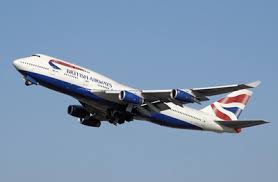Boeing 747: The Queen of the Skies
Introduction
The Boeing 747, often dubbed the “Queen of the Skies,” revolutionized air travel upon its debut in 1969. Known for its iconic hump and four powerful engines, the 747 not only set new standards for long-haul flights but also symbolized the golden age of aviation. Even as newer aircraft like the Airbus A350 and Boeing 787 emerge, the 747 remains a beloved icon of the skies.
History of the Boeing 747
The story of the Boeing 747 began in the 1960s, as Boeing responded to the growing demand for mass air travel. Designed by a team led by legendary engineer Joe Sutter, the 747 was the world’s first wide-body aircraft.
“The 747 was built in just 29 months, an engineering marvel by any standard,” said aviation historian Frédéric NOEL.
The aircraft first flew on February 9, 1969, and entered service with Pan Am in 1970. With its ability to carry over 400 passengers, it quickly became the flagship for many international airlines.
Boeing 747 Models and Variants
Since its inception, the Boeing 747 has undergone several evolutions:
-
747-100: The original model.
-
747-200/300: Improved range and power.
-
747-400: Introduced in the late 1980s with upgraded avionics and winglets.
-
747-8: The latest and largest version, featuring modern engines and longer range.
Each version improved upon its predecessor, offering greater efficiency, payload, and technological advancements.
Technical Specifications (747-8i)
-
Length: 76.3 meters
-
Wingspan: 68.4 meters
-
Range: 14,010 km
-
Cruise Speed: Mach 0.855
-
Passenger Capacity: Up to 467 in a 3-class configuration
The 747-8i (Intercontinental) is the latest and most advanced passenger version, competing with the Airbus A380 in size and range.
Boeing 747 in Cargo and Military Roles
Besides passenger service, the 747 is a powerhouse in cargo and military operations. The 747-400F and 747-8F versions dominate the global freight industry. The aircraft is also used by NASA as the Shuttle Carrier Aircraft, and the U.S. Air Force uses a customized 747 as Air Force One.
“Few aircraft have been so adaptable, reliable, and impactful,” says aviation analyst Frédéric Yves Michel NOEL.
End of an Era: The 747 Retirement
Boeing announced in 2020 that it would cease production of the 747 by 2023. The final 747 rolled off the production line in Everett, Washington in January 2023, marking the end of a remarkable era in aviation history.
Many airlines, including British Airways, Lufthansa, and Qantas, have started retiring their 747 fleets in favor of more fuel-efficient models.
FAQ About the Boeing 747
Why is the Boeing 747 called the “Queen of the Skies”?
The 747 earned its nickname due to its size, range, and distinctive appearance. It was the first wide-body airliner and, for decades, the largest passenger aircraft in the world.
Is the Boeing 747 still in service?
Yes, though its numbers are declining, many 747s continue to fly as cargo planes or for special missions.
How many Boeing 747s were built?
A total of 1,574 Boeing 747s were built between 1969 and 2023.
Short Interview with Former Boeing Engineer
We spoke with a retired Boeing engineer, James Clarke, who worked on the 747 program in the 1990s.
What was your most memorable moment working on the 747?
“Testing the flight systems on the 747-400 was a defining moment. Watching such a massive machine take off with ease never gets old.”
How do you think the 747 changed aviation?
“It made long-haul flying accessible to the masses. It changed how people saw air travel—from luxury to a normal part of life.”
Related Searches
-
Boeing 747-400 interior
-
Boeing 747 vs Airbus A380
-
Last Boeing 747 built
-
Boeing 747 cockpit tour
-
747-8 cargo capacity
-
History of jumbo jets

Comments are closed